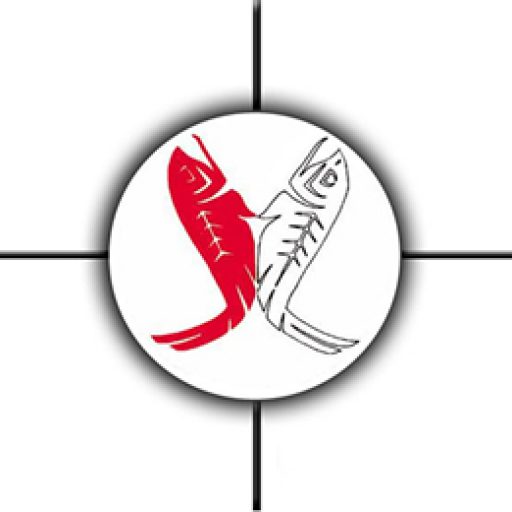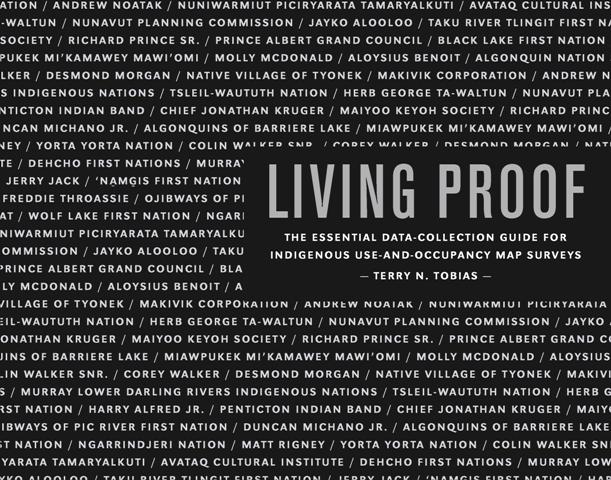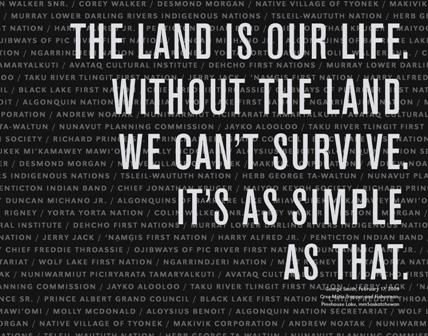Use & Occupancy
In 2012 Terry Tobias, author of the methods text “Living Proof: The Essential Data-Collection Guide for Indigenous Use-and-Occupancy Map Surveys”, and his team of interviewers were hired by the Lhoosk’uz Dene Nation to conduct a Use-and Occupancy map survey with the community. After carefully selecting a sample of community members, they were able to assist the members in documenting over 2,500 cultural sites throughout the territory.
As described in Living Proof, the Tobias methodology is expansive, in-depth and is used throughout the world as a tool for Indigenous peoples who are looking for ways to assert their ongoing ties to the land. Based on sound social-science principles and an extensive body of expertise, Terry takes a rigorous approach that encompasses all levels of methodological detail, from the broadest to the smallest. His book was written with support and knowledge of many practitioners as well as generations of experience in many Indigenous communities within their respective territories throughout Canada, Alaska and Australia. The book is directed largely at indigenous communities and their researchers. It emphasizes the creation of map biographies – maps generated from individual interviews with indigenous participants that depict land use and occupancy for specified time periods and locations.
Indigenous groups are producing these land-use maps as central components of their negotiations with governments and industrial developers. Terry’s goal is to introduce a scientifically rigorous process for generating the data with which these maps are created. In doing so, he establishes a methodological standard against which use and occupancy maps can be evaluated.
The research conducted in Kluskus consisted of detailed interviews with a number of community members in order to provide maps displaying culturally sacred places, habitation sites, traditional hunting grounds, traplines, fishing sites and plant harvesting areas.
“Good research is a thinking person’s game.” – Zina O Leary
From the author’s introduction:
“Living Proof is about a land use-and-occupancy research method called the map biography. It is structured as a how-to manual to help readers design and run the data-collection component of a successful map project.
Designing an effective use-and-occupancy research project is a creative process that requires reflection, solid thinking, common sense, experience, patience and a good work ethic. Templates are provided in these pages to help readers assemble the tools needed for their map surveys, but these are not one-size-fits-all solutions. Research design is much more than simply plugging values into a formula; a map will be only as good as the critical thought brought to bear in designing and running the project. The community’s own methodology will be described in a custom-written data-collection manual and the precise set of tools and conventions used will be determined by the unique context of the particular community and culture. Linda Ellanna, et al., are clear that, ‘. . . [T]here is no single mapping methodology which can . . . be applied to all ecological, cultural or temporal contexts. More specifically, whereas all mapping methodologies should conform to the scientific standards described above, variations in all dimensions of the methodology are not only possible but highly desirable – that is, the methodology should be keyed to the [specific cultural context and research] problem.’
To Contact Terry Tobias :
Tobias and Associates
Land Use & Occupancy Research Consultants
33 West 23rd Avenue
Vancouver, BC
V5Y 2G8
Phone number: 604-730-5548
Contact Terry Tobias by email at: tnt@terrytobiasassociates.com


